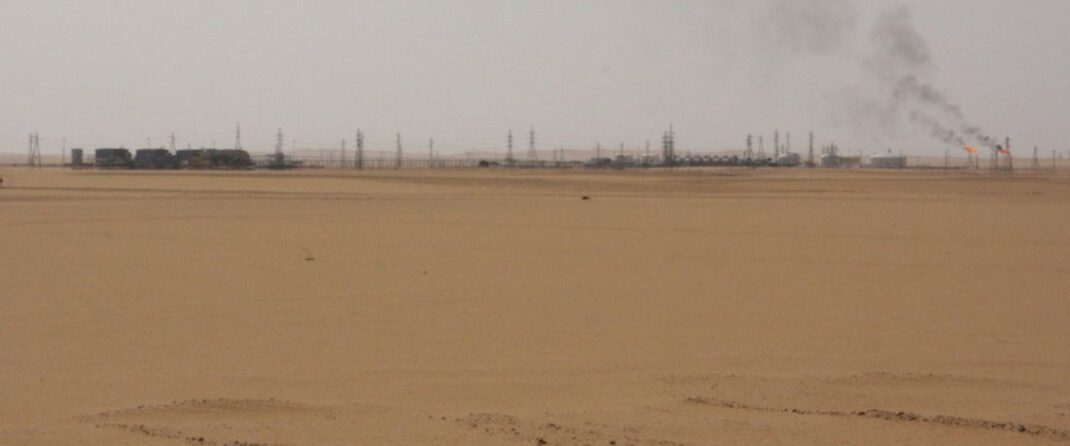By Chris Stephen
 The North African producer faces significant challenges in extending, or even maintaining, its jump in output.
The North African producer faces significant challenges in extending, or even maintaining, its jump in output.
Libyan oil production has recovered faster than expected after the end of an eight-month blockade of most of its ports and fields. But that recovery rests on shaky foundations.
The blockade was imposed in January by Khalifa Haftar, commander of the powerful Libyan National Army (LNA) based in the east of the country. Output plummeted from 1.2mn bl/d to 100,000bl/d as a result, with most of the remaining production from offshore platforms.
Haftar imposed the blockade on the grounds that eastern Libya should get a larger share of oil revenues collected by the Tripoli-based Government of National Accord (GNA)—which, as the internationally recognised administration, has title to hydrocarbons receipts.
Changing course
Two factors contributed to Haftar’s mid-September U-turn. The first was a sharp military reversal. In April, the GNA’s chief foreign backer, Turkey, intervened to break the LNA’s year-long siege of Tripoli.
Turkey deployed drones and Syrian mercenaries to support pro-GNA forces, which pushed Haftar hundreds of miles east to the coastal town of Sirte—gateway to the Sirte Basin and home to two-thirds of Libyan oil production.
Egypt, which backs Haftar, had to step in to threaten in June its own intervention if the GNA crossed a so-called ‘red line’ south of Sirte. Stalemate followed, but Haftar’s prestige was dented.
The second factor was US diplomatic intervention. President Donald Trump declared early in his tenure that he had “no interest” in Libya. But that changed this summer, partly because of US fears that Haftar would grant a naval base in eastern Libya to one of his key allies, Russia.
Previous mediation was led by the UN, which has tried and failed since 2014 to persuade Libya’s two warring governments in Tobruk and Tripoli to unite as one. The US state department’s new approach appears concentrated on solving peripheral issues before attempting a long-term political deal.
The US first persuaded the secretive Central Bank of Libya (CBL) to open its books, with financial services firm Deloitte commissioned to produce an audit.
A Libyan peculiarity is that, while the GNA is nominally in charge of the CBL, the bank refuses to disclose its balance sheet of foreign reserves to them or anyone else.
Many observers, including both governments, doubt those reserves are as high as the World Bank’s estimate of $87bn. US officials take a view that, before Libyans can decide how to divide oil revenue, they must first know genuine figures.
The US treasury department has also sanctioned six Libyan oil smugglers, helping to dent rampant corruption that has seen Libyan militias steal gasoline and export it illegally to Europe.
In September, the US, with UN support, mediated an agreement between Haftar and deputy GNA prime minister Ahmed Maiteeq for the formation of a new commission to decide how oil revenue is spent. With the deal signed, Haftar declared the blockade over.
In late October, the UN persuaded both sides to sign a ceasefire, formalising a military stalemate at the red line.
Output boost
Since then, oil production has ramped-up faster than many predicted. Bank Goldman Sachs estimated in early October it would hit 500,000bl/d by year-end. But, by early November, it was already 800,000bl/d. Libya’s NOC predicts it will reach 1mn bl/d later this month and 1.3m bl/d by January.
Many analysts are more cautious, highlighting the fractured state of Libya’s oil industry. On the one hand, Libyan oil is light and sweet, falling into a top 4pc of premium oil that finds ready buyers even in a well-supplied, sub-$40/bl global market. On the other, tankers serving a country where militias employ seize-and-ransom tactics mean sky-high insurance costs.
Libya’s three key production areas are all showing signs of life. In the west, Sharara (300,000bl/d) and nearby El Feel (90,000bl/d) are both running at half capacity and likely to see output rise. In the east, NOC subsidiary Agoco says Sarir (300,000bl/d) is back online and may reach full capacity later this year.
More problematic is a 300,000bl/d third cluster of fields in the central Sirte Basin, operated by Waha, a joint venture between NOC, Total, and US independents Hess and ConocoPhillips. These fields have not just been neglected but seen military action.
Approximately half the storage tanks at tthe feeder ports of Es Sider and Ras Lanuf have been wrecked by several rounds of fighting. Output at nominally open fields may be limited by these, and other, bottlenecks, for lack of anywhere to store oil until it can be shipped.
NOC chairman Mustafa Sanallah warns that, without an expanded repairs budget, output could fall back in the coming months if and when equipment fails. And Sanallah must also entice foreign firms and expertise to deploy in a war-ravaged land.
Until last year, US oil services firm Schlumberger had sent crews to restore damaged facilities. But such companies may want concrete evidence of a sustainable ceasefire before returning. Almost all IOC operators have long since withdrawn foreign staff.
Looming threats
Whether the oil recovery can be maintained and expanded or will succumb to fresh shutdowns depends on a series of hurdles. The first is whether the UN can translate the ceasefire into a long-term political deal. It is convening peace talks in Tunis on 9 November, hoping Libya’s myriad factions agree on elections for a new, yet-to-be-defined united government.
A second problem is that the revenue-sharing commission agreement—Haftar’s trigger for lifting the blockade—has collapsed. Most of the GNA has rejected the deal, despite Maiteeq’s support. Diplomats hope a new revenue-sharing mechanism can be agreed at the Tunis talks.
Thirdly, the ceasefire calls for foreign forces to exit Libya by 23 January. Neither Turkey nor Russia, the countries with the largest forces deployed, have signalled willingness to comply.
Libya’s civil war is increasingly a proxy war, its two sides polarised along a wider fault line stretching across the Middle East. The GNA’s main backers, Turkey and Qatar, are on one side of regional split against Haftar supporters Egypt, the UAE and Saudi Arabia.
Turkey is also in a standoff over Eastern Mediterranean maritime claims with Egypt and fellow Haftar backers Greece and France. Turkey and Russia, meanwhile, also oppose each other in Syria and in the Azeri-Armenian Nagorno Karabakh dispute. Any political solution in Libya will likely depend on events elsewhere.
Finally, there is Deloitte’s CBL audit. No publication date is specified, but it is expected before the end of the year. The audit may set Libyan minds at rest or expose spending practices and inequalities that ignite fresh tensions.
Paradoxically, the flood of military aid reaching both sides may actually sustain, rather than further threaten, Libya’s output recovery. The red line has become a fortified border, and formidable air power deployed there has, since July, acted as a deterrent against either side launching offensives across it.

**************
More Libyan Oil Causes Headache For Russians
With Africa’s largest proven oil reserves, Libya took a major step toward reviving its oil industry by reopening its biggest field, presenting a new headache for OPEC+.
The alliance of major producers and its allies hopes to be able to boost production next year yet without price drops. The new wave of coronavirus and the risk of the economic slowdown are again on the table.
Now Libya, a top oil producer, is coming back on track. Perhaps OPEC+ will not trim output limits by at least mid-2021. This is also true for Russia that sees more modest revenues from oil exports this year, a situation that poses a threat both to its oil companies and the federal budget.
Libya is gradually lifting force majeure on fields shut due to the civil war. As the fighting went on, Libyan oil exports shrank dramatically since January but now, it could boost to 1 million barrels per day in just a month.
Libya’s National Oil Corporation (NOC) has lifted a force majeure on what it deemed secure oil ports and facilities.
Unblocking oil output and exports came after a month and a half ago when Libyan commander Khalifa Haftar announced he would lift the blockade on oil production after reaching an agreement with the rival Tripoli-based Government of National Accord.
These two hammered out a permanent truce. The pace at which Libya is now restoring its oil output and exports sent shockwaves across the market.
In just a month and a half, crude production boosted nearly sevenfold, to roughly 700,000 barrels per day. Libya has Africa’s biggest crude oil reserves. Although a member of the oil-producing cartel, it is exempt from cuts in crude output – so is the Russia-led group of other countries.
seeking to raise oil prices in the face of the new wave of coronavirus and fresh economic restrictions. Not so long ago, representatives for OPEC+ states met and decided to ease oil output strifes starting from early January.
The alliance planned to ease the curbs by 2 million barrels a day. Yet with virus cases accelerating in many countries, the cartel faces a difficult decision – with no new changes.
The price of crude oil began to drop sharply, standing at 60 percent of the price in the early months of this year. Bringing more oil to the market is another factor that forced OPEC+ to wait before easing the limitations.
Speaking at the Vaidai Club meeting on October 22, Vladimir Putin said for him, there was no need to change anything in the current oil production curbs.
OPEC+ has “proved to be an effective instrument to ensure long-term stability on global energy markets,” he told the meeting. Interestingly, Igor Sechin, the CEO of Rosneft – Russia’s biggest oil firm – delivered his stance.
An arch opponent of OPEC+, he admitted that the cooperation of oil-producing countries was a must, calling to take actions to stabilize the market.
It is worth adding that Sechin was behind the price war in the spring of this year, which resulted in a slump in oil prices amidst the coronavirus pandemic. Back in March, he said Russia might quit the cartel.





